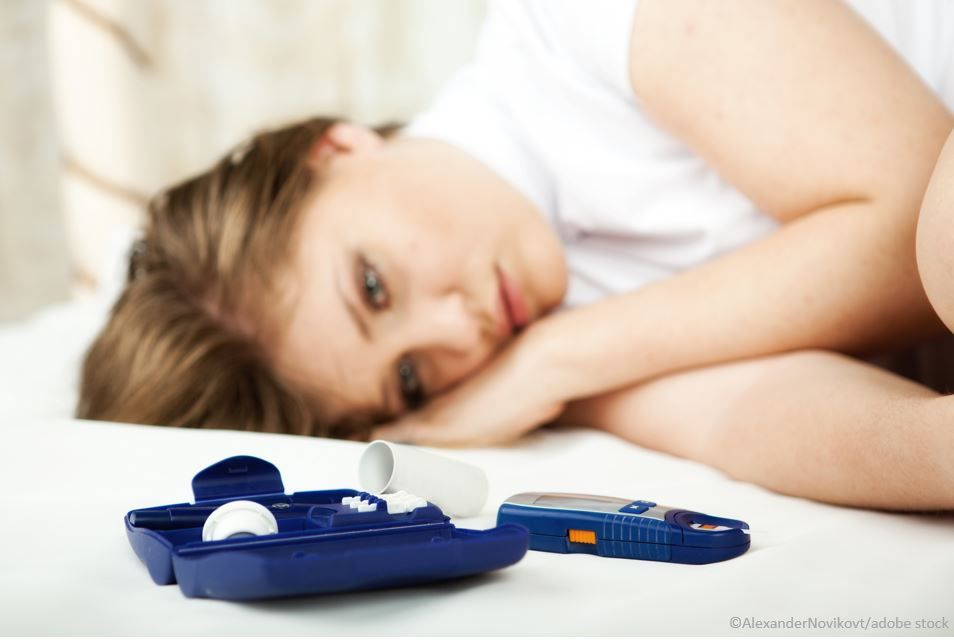Flash CGM Initiation May Improve Depression in Persons with Diabetes

In patients with insulin-treated diabetes, initiating use of flash glucose monitoring (fCGM) has the potential to improve symptoms of depression, according to findings of a new study from investigators at the University Medical Center Groningen in the Netherlands.
The results, published in BMJ Open Diabetes Research & Care, have significant implications, the authors note, given the 3-fold and 2-fold higher prevalence of depression among persons with type 1 and type 2 diabetes, respectively, compared with persons without diabetes.
The authors write, too, that glycemic control is worse among adults with diabetes and comorbid depression and that this population is more likely to have both micro- and macrovascular complications. Further, research identifies the burden of intensive diabetes self-management as a determinant of depression in diabetes.
The authors hypothesize that use of fCGM could alleviate the stress of self-management and so help reduce depression. The existing literature on the relationship, they point out, is scarce and outcomes conflicting. They designed their study to help fill the information voids on the effects of long-term fCGM use and emotional wellbeing among insulin-treated diabetes patients.
Their post-hoc analysis utilized data from the prospective FLAsh monitor REgistry in the NetherLands (FLARE-NL) (2016-2017). A total of 674 persons who had initiated fCGM and continued to use it for 12 months were included in the current study. Half the cohort was men and mean age was 48.2 years. The majority (78.2%) had type 1 diabetes (T1D) and 14.5% had insulin-treated type 2 diabetes (T2D).
For the primary outcome, the investigators designated the difference in the rate of persons with a Short Form-12 Mental Component Score (SF-12 MCS) ≤45 (indicative of a depressive disorder) between baseline and 6 and 12 months after fCGM initiation.
They also investigated changes in MCS over time for the total population and several subgroups. In addition, they assessed the association between the difference in MCS over the study period and other variables.
Findings
The average MCS score at baseline was 48.5 which improved to 50.7 after 6 months of fCGM use and rose to 51.3 after 12 months. Average baseline MCS was lower among women (47.1 vs 50 for men), although scores improved over time for both women and men.
At baseline, 235 (34.9%) participants had an SF-12 MCS ≤45. After 6 months, the number of participants with MCS ≤45. decreated to 202 (30.0%) and after 12 months to 173 (25.7%) (P<.01).
Both men and women with baseline MCS scores ≤45 recorded improvments at 6 and 12 months, with scores increasing to 45.2 and 43.6, respectively, after 12 months. Improvements were seen for all baseline HbA1c categories. Further, improvements were significant for participants with depressive disorder at baseline, with numerical, nonsignificant increases in MCS from baseline to 1 year for those with higher baseline scores.
In multivariable analysis, the investigators found that lower MCS and younger age at baseline were the only significant predictors of MCS improvement over 1 year.
The authors observe that their study does provide new information to help better understand the relationship between use of fCGM and amelioration of depressive disorders among persons with diabetes, but add, “Our findings should be interpreted with caution and its [sic] clinical relevance has to be proven in future studies.”
Reference: Bakker JJ, Lameijer A, Guerrero JLF, Bilo HJK, van Dijk PR. Commencement of flash glucose monitoring is associated with a decreased rate of depressive disorders among persons with diabetes (FLARENL7). BMJ Open Diabetes Res Car. 2022: 10: e002769.doi:10.1136/ bmjdrc-2022-002769